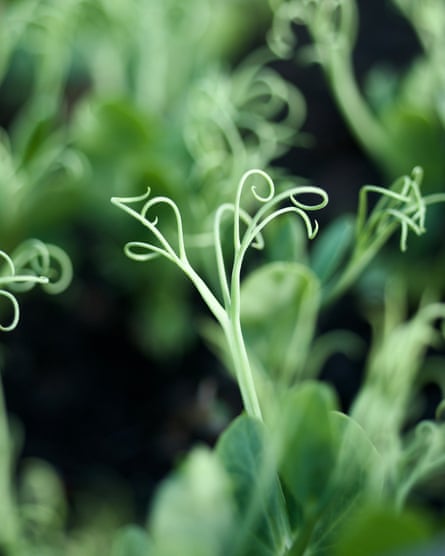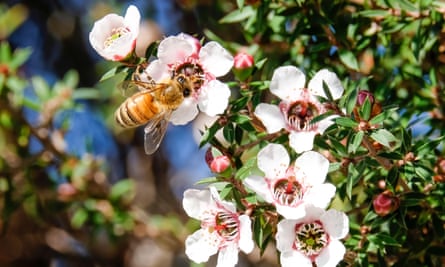Last month, at a gathering at New York University, a group of prominent biologists and philosophers widened the perimeter of a very exclusive club. They declared that there is “a realistic possibility” that insects, crustaceans and fish experience consciousness. This was an expansion of an earlier declaration, made in 2012, in which researchers asserted that mammals and birds were capable of intentional behaviour and had all the physical markers of conscious states: “Consequently, the weight of evidence indicates that humans are not unique in possessing the neurological substrates that generate consciousness,” they concluded. The official consciousness list – or “realistic possibility of consciousness” list – now includes “all vertebrates (including all reptiles, amphibians and fishes) and many invertebrates (including, at minimum, cephalopod mollusks, decapod crustaceans and insects)”.
Lizards have been shown to learn how to navigate mazes, suggesting behavioural flexibility, an often-used marker of intelligence. Bees are able to distinguish between styles of art; engage in play; and perform an elaborate, symbolically rich “waggle dance” that tells their hive mates precisely how far and at what angle to the sun to fly to find food. Scientists suggest bees may have the capacity to feel, perhaps denoting consciousness.
Where, then, will the circle widen to next? As a journalist, I have spent the last several years immersed in the world of plant behaviour research, where botanists are coming to startling new conclusions about what plants are capable of. They have found that plants communicate to each other about threats, manipulate animals to their own advantage, and can react to the sound of a predator caterpillar chewing. Some plants, we now know, can count: the Venus flytrap famously counts the number of times the fine trigger hairs in their maw-like traps are flicked, so as to ensure they are ensnaring a wriggling creature and not, say, a bit of fallen twig. Twining parasitic vines appear able to sense the suitability of their potential victims before making contact with them, and cress will make space for its genetic kin, rearranging its leaves to avoid shading out its siblings. When under attack, tomatoes can alter the chemistry of their leaves in such a way that encourages the caterpillars to eat each other instead. And I have seen a climbing plant in Chile that can change its leaves to mimic the shape, texture and vein pattern of whatever plant grows beside it. Plants’ behaviour appears elastic, capable of adapting to changing circumstances, and even strategic: they integrate information about the recent past to make decisions for the future.

At what point could this be deemed conscious behaviour? Sceptics point to the plants’ obvious lack of brains – yet one cognitive scientist involved in the new consciousness declaration pointed out that a cerebral cortex may not be necessary for simple forms of consciousness, opening the possibility of moving away from brain-centric definitions. Perhaps plants have no brain because their lifestyle doesn’t require one. They evolved to thrive while rooted in place. Without the need to move quickly across long distances, there may have been no need for a highly portable command centre. Like an octopus, which has fairly autonomous neurons distributed throughout each of its limbs, a plant might be more like a self-aware system than a consolidated processing centre. Some botanists have suggested that the whole plant might loosely resemble a brain, making consciousness a more diffuse, whole-body phenomenon. A brain, some contend, is only one way to build a mind.
It is important to remember that there is no one definition of consciousness; while theories abound, no one has identified the mechanical basis for consciousness – not even in the human brain. Rather it is mostly observed through inference: we watch how a creature responds to the world around it, and take that to be symptomatic of a conscious state. Perhaps consciousness can be seen by observing its inverse: whether a living being has the ability to be knocked unconscious. When humans are put under general anaesthesia, they stop responding to touch. Electrical activity in the brain dims. Touching an anaesthetised person’s body – or slicing into it for surgery – will not produce the same flurry of electrical bursts it would under normal circumstances. The drugs interfere with the electrical signals that coincide with our awareness, rendering us temporarily unconsciousness beings.
Yet plants also pass that test. Numerous experiments have etherised plants and found they are susceptible to the same gases that put us under. When researchers give Venus flytraps a general anaesthetic, by suffusing their enclosures with diethyl ether, they cease to respond to touch – their traps remain open no matter how many of their trigger hairs are mechanically stimulated. The relationship between the trigger hairs and the movement of the trap’s maw is an electrical one; under anaesthesia, the electrical signals that trigger the plant’s response are blocked. These parallels to human electrical signalling have prompted some neuroscientists to argue that we should broaden the definition of a nervous system to include plants.
The species Mimosa pudica, more often known by its nickname “sensitive plant”, is another delightful example of plant movement that happens fast enough for us to watch. In its normal state, a mimosa will neatly close its leaves in response to the slightest touch. If the disturbance is sustained, the whole leaf will go limp where it meets the stem. This is a clever survival trick: if a caterpillar is busy eating a leaf that suddenly droops then it might slide off. But when mimosa is etherised, the plant won’t close or droop its leaves at all; it appears utterly unbothered.
Pea seedlings, too, are delightful movers: they wave their tendrils around enough over the course of 20 or so minutes that they appear in time-lapse to be dancing. Under anaesthesia, they will curl their tendrils inward and cease their swaying altogether. When the ether is removed, they recover, and begin flailing around again.

Yet perhaps searching for consciousness is the wrong way to go about furthering our understanding of plants. Must plants be deemed conscious for us to see them as active, decision-making, sentient creatures, with agency over their lives? Some botanists who want nothing to do with the emerging plant consciousness debate are nevertheless in awe of what plants are capable of. They don’t want to see their study subjects diminished by human definitions of intelligence or consciousness that fail to take into account the incredible subtlety with which plants sense their world and the creativity with which they respond to its fluctuations. Indeed, some plant senses extend far beyond anything we are capable of; plants are, for example, masters of spontaneous chemical synthesis. Those chemicals exit through pores on their leaves and float through the air, in some cases making other creatures do their bidding. Several plants, including lima beans, can synthesise the exact chemical that will summon the predator of whatever is eating it, beckoning them to come and eradicate the pests. Others make ultra-specific pheromones to lure insects into attempting copulation – causing pollination in the process – and still others have found ways to lie to bees about how much pollen they have waiting for them in their flowers.
Far from being passive and ornamental, plants have evolved ingenious methods for dealing with whatever the world has thrown at them. But if we concede that plants are in some way aware, then we face new moral questions. Should they be given rights? Perhaps it’s time to offer plants closer ethical consideration. It is hard to picture how this might work, though legal scholars have made some inroads to trying.
after newsletter promotion
It is easier to imagine a greater ethical awareness of plant life, however, when you consider that as recently as the turn of the 20th century surgery demonstrations were still being performed on living, unanaesthetised animals, particularly dogs. Doctors and scientists justified vivisection because animals, they believed, were unable to experience pain. This idea sounds plainly ridiculous and abjectly cruel to us now. Of course animals can experience pain. But science said otherwise back then.
Vivisection became socially unacceptable before it became scientifically so. The surgical profession did not change its mind, but rather organisations were formed, advocating for the rights of animals. The end of vivisection was a paradigm shift for both science and society, and these shifts take hearts and minds.
As new revelations give us insights into other beings’ lives, it may be time for another paradigm shift. A true understanding of consciousness and how it might look in creatures so utterly alien to us as plants may always slip from our conceptual grasp. It is better, I think, to see all of life – us included – as a roiling creative experiment with trillions of absurd and delightful permutations. We sit not at the top of the evolutionary tree but somewhere in its messy entangled tendrils, each probing the air, growing constantly in new directions.
Source: theguardian.com


